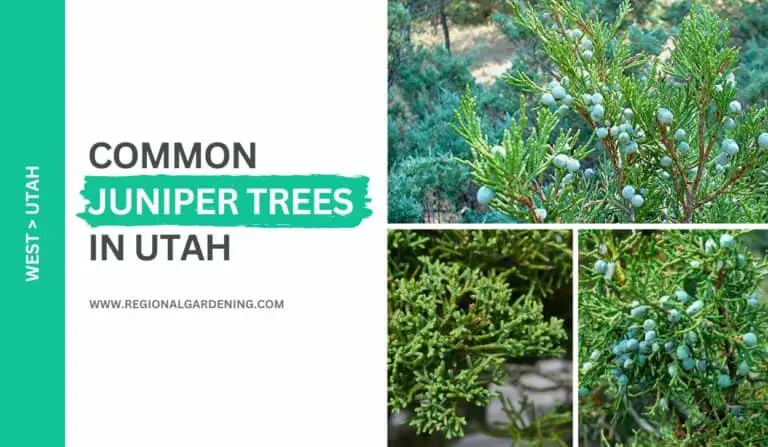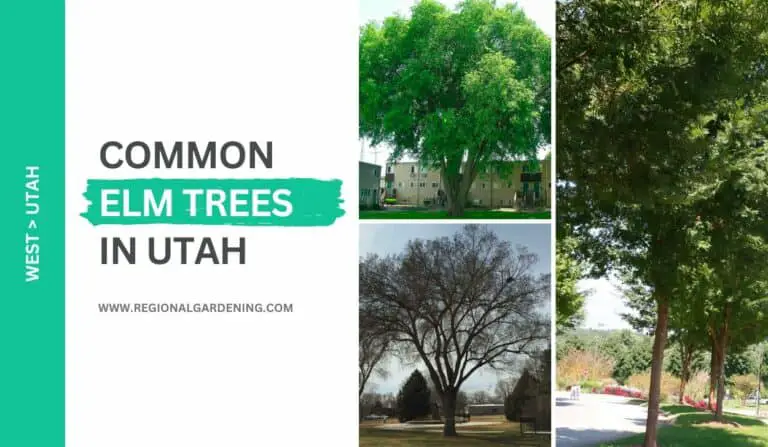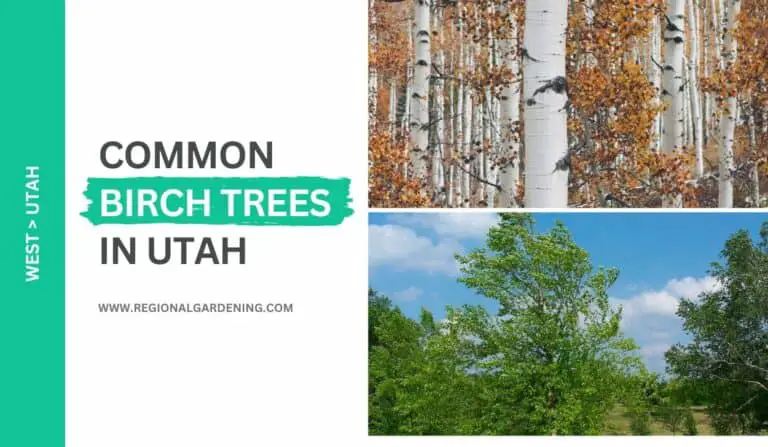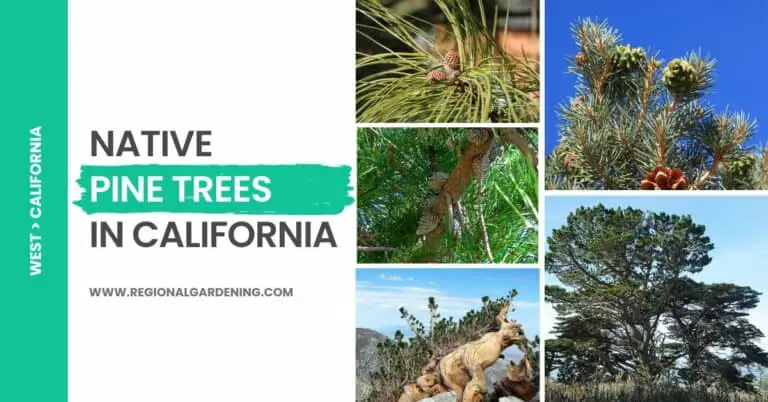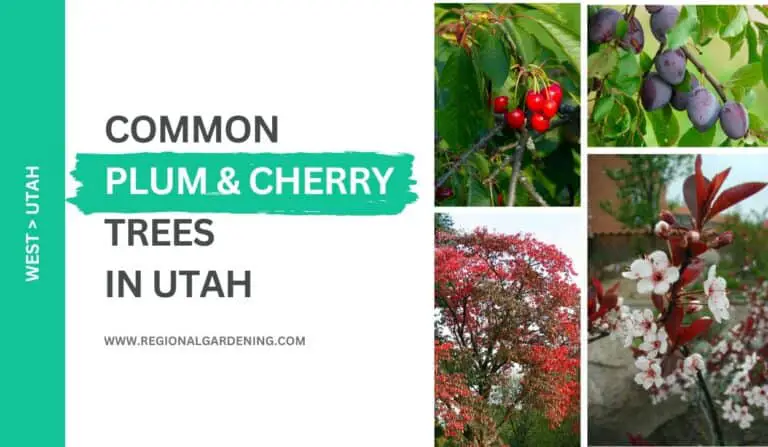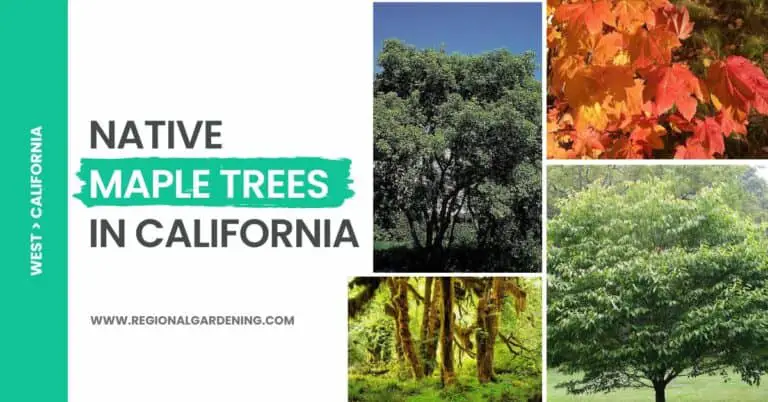2 Common Alder Trees In Utah (Photos & Identification)
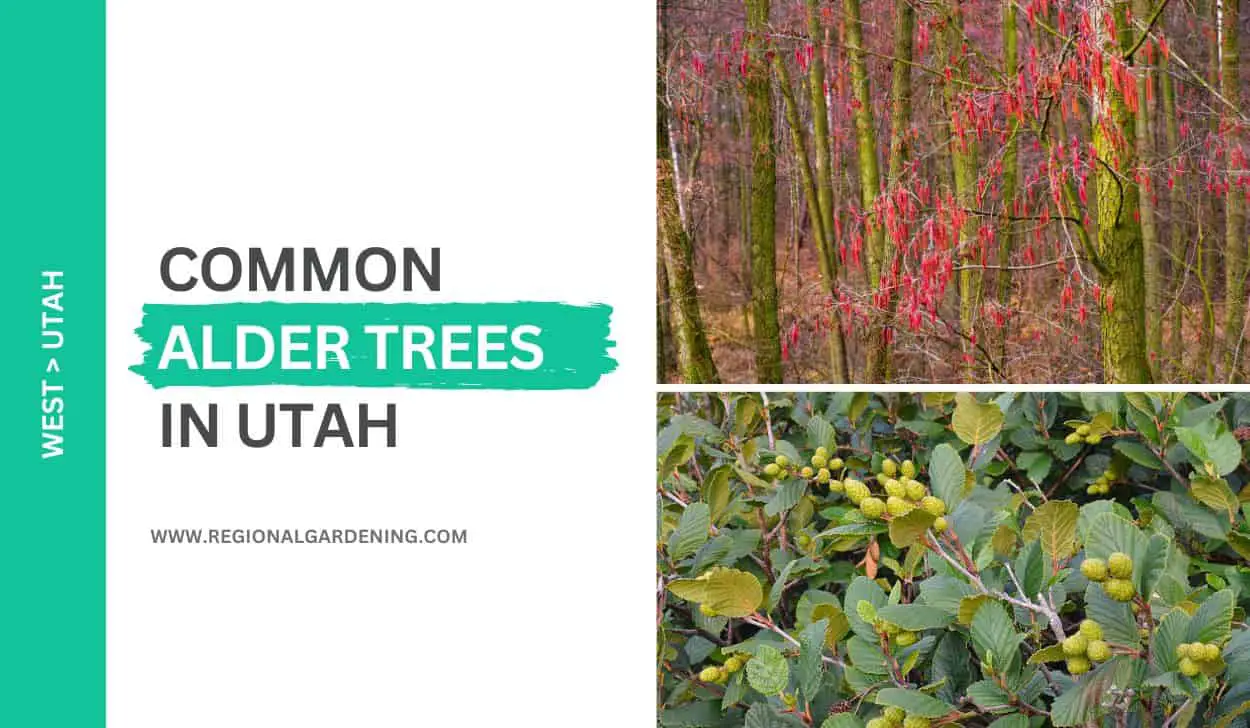
Exploring the verdant landscapes of Utah, it is impossible not to notice the presence of two distinct alder trees. While one species is proudly indigenous and deeply rooted in the state’s natural heritage, the other is a captivating import from faraway European lands. These two alder species, with their distinctive characteristics and contributions, serve as illustrative examples of Utah’s botanical diversity.
If you are not familiar with the common alder trees in Utah, but interested to know about them, then this is the only article you need to read. We explore both trees with complete details including high-quality photos as well.
So, let’s begin.
1. Mountain Alder
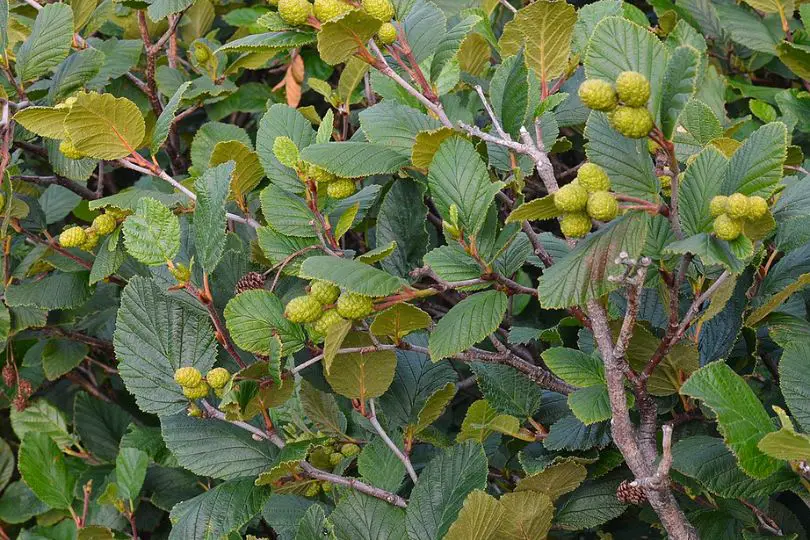
- Common Names: Mountain Alder, Thinleaf Alder
- Scientific Name: Alnus tenuifolia
- Mature Height: Up to 40ft (15m)
- Flowers/Cones: Catkins
- Native Range: Western United States and Canada
- Uses: Riparian restoration, furniture, veneer, carvings, electric guitar bodies
Mountain Alder, also known as Thinleaf Alder, is a shrubby tree endemic to the western United States and Canada, especially damp canyon regions in Utah.
This deciduous tree has ovate-oblong leaves that are 2 to 4 inches long, somewhat lobed, and doubly serrated. The leaves are slender, dark green on top and pale yellow-green on the bottom. Mountain Alder twigs are slender and have orange lenticels or bumps, while the buds are bright red and stalked, measuring around 1/4 to 1/3 inch in length.
Mountain Alder produces little nutlets within oval “cones” or catkins that range in length from 1/3 to 1/2 inch during the flowering season. The tree has thin, smooth bark that is brownish-red in color. The Mountain Alder is negligible in terms of wood, as is typical of alder wood in general.
Alder wood is light and supple, with prominent rays and a white-to-pinkish tint. It is diffuse-porous and is commonly used in furniture, veneer, and carvings.
Mountain alder grows well in damp, chilly conditions, especially near streams. It tolerates some shade in its early stages but becomes intolerant as it matures.
While it is not widely planted and lacks cultivars, it may be good for damp locations where native plantings are required. Mountain Alder grows in zones 1–7 and is a nitrogen-fixing species that contribute to ecosystem health and variety.
2. European Alder
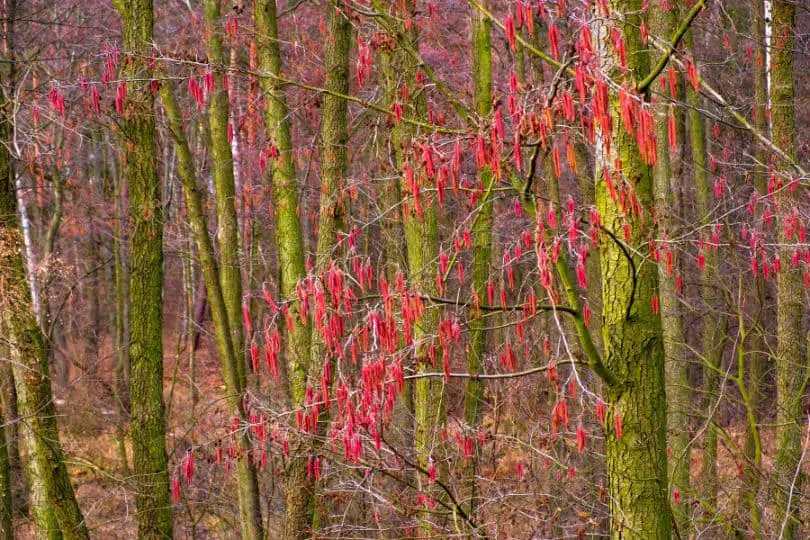
- Common Name: European Alder, Common Alder
- Scientific Name: Alnus glutinosa
- Mature Height: 40-50ft
- Native/Non-Native: Native to Europe
- Flowers/Cones: Small oval-shaped cones (catkins), nutlets
- Uses: Furniture making, cabinetry, veneer, carving, riparian restoration
The European Alder, botanically known as Alnus glutinosa, is a deciduous tree endemic to Europe. It is also frequently known as Common Alder.
This tree has oval-shaped alternating leaves that are 2 to 4 inches long and dark green. The leaves have a glossy sheen and a slightly serrated border. The twigs of the European Alder are relatively robust and contain unique stalked and reddish-brown buds.
The European Alder produces small, oval-shaped cones known as catkins throughout the flowering season. These catkins are 1 to 2 inches long and contain small nutlets. The bark of the tree is dark and tough, becoming fissured with age and displaying colors of grayish-brown.
European Alder is valuable in terms of wood qualities. It has a light reddish-brown tint and is moderately robust and durable. The wood is frequently utilized in various applications such as furniture building, cabinetry, veneer, and carving. It is well-known for its strength and workability, making it an excellent choice for woodworking tasks.
The European Alder grows best in moist locations, such as riverbanks, lakeshores, and other wetland habitats. It can endure wet circumstances and is even tolerable to mild salinity. This tree species is important for the environment since it is a nitrogen-fixing plant that feeds the soil with this crucial nutrient.
The European Alder is occasionally planted in landscaping for its decorative value as well as its capacity to stabilize soils in damp locations. It is well-suited to riparian restoration efforts and can help to create wildlife habitats.
The European Alder is adaptable to a variety of climates and hardiness zones, making it a versatile and useful tree species throughout Europe.
Common Alder Trees In Utah – Frequently Asked Questions (FAQs)
Let’s go through some of the most commonly asked questions related to native and non-native commonly found alder trees in Utah.
Are there alder trees in Utah?
Yes, there are alder trees in Utah. Utah is one of the many regions of North America where alder trees are indigenous. They are commonly found in riparian areas, along streams, rivers, and wetlands. Alder trees grow best in the northern and central regions of Utah, especially at higher elevations where the climate and moisture are ideal for their development.
Which wood is good, alder or poplar?
Both alder and poplar woods have distinctive qualities and are appropriate for various uses. The color of alder wood is light, ranging from pale yellow to light brown with a hint of red. It has a straight grain and fine texture, making it moderately soft and easy to work with. Alder is frequently used in furniture, cabinetry, and millwork and is renowned for its stability. Poplar wood, on the other hand, has a medium texture, a straight grain, and a light cream to pale yellow color. It is perfect for construction, cabinetry, and furniture projects because it is lightweight and relatively soft.
What are some of the common uses of alder trees in Utah?
Alder trees in Utah contribute to a range of practical uses across different sectors. These adaptable trees are essential for the restoration of riparian zones and wetlands because they do so well in moist soil environments. Their presence improves the water quality, stabilizes streambanks, and prevents erosion. Alder wood is used in the construction industry to make millwork, furniture, and cabinets. It is a popular option for these uses due to its stability and moderate density.
Alder also appeals to woodworkers and artisans who value its special qualities, and it is even used to make the bodies of electric guitars, adding to its wide range of uses.
Similar Articles
- Common Oak Trees In Utah
- Common Pine Trees In Utah
- Common Mulberry Trees In Utah
- Common Magnolia Trees In Utah
- Common Ash Trees In Utah
- Common Spruce Trees In Utah
- Common Elm Trees In Utah
- Common Birch Trees In Utah
- Common Poplar Trees In Utah
- Common Maple Trees In Utah
- Common Dogwood Trees In Utah
- Common Nut Trees In Utah
- Common Cedar Trees In Utah
- Common Willow Trees In Utah
- Common Cypress Trees In Utah
- Common Beech Trees In Utah
- Common Juniper Trees In Utah
- Common Fir Trees In Utah
- Common Plum & Cherry Trees In Utah
- Common Palm Trees In Utah
Sources
The Regional Gardening team makes sure that the information in our articles is accurate by only using sources that are known to be trustworthy. Some of these sources are peer-reviewed journals from government agencies, well-known universities, and scientific research organizations.
- Trees & Shrubs In Yard And Garden, Utah State University Extension
- Native & Non-Native Tree Identification, Utah State University Forestry Extension.
- Native Plants, Utah Native Plant Society.
- A Guide To The Trees Of Utah & Intermountain West, Book By Michael Kuhns, Utah State University Press.


